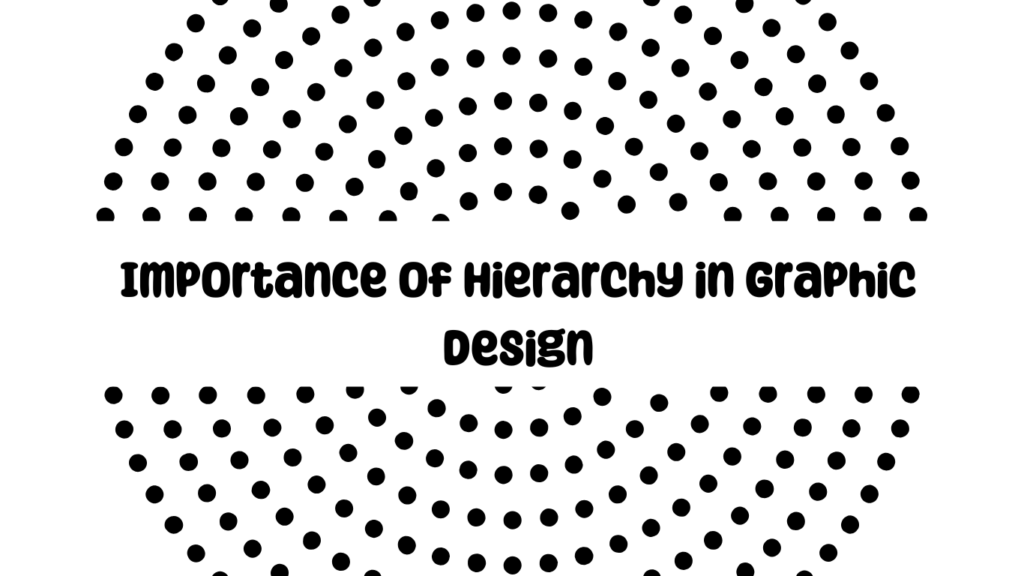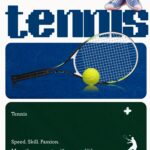The importance of Hierarchy is one of the most fundamental principles in graphic design. It structures content in a way that enhances readability, engagement, and user experience. By strategically using elements like size, color, typography, and positioning, designers can guide the viewer’s eye through the information in a logical and impactful way. This principle applies across all design mediums, from web design to print and social media graphics.

Why Hierarchy Matters in Design
Effective hierarchy ensures that your audience understands the message quickly and intuitively. Here’s why it’s crucial:
- Improves Readability – Hierarchy helps organize content, allowing viewers to grasp the main message at a glance.
- Creates Visual Flow – It guides the eye naturally from the most important elements to the supporting details.
- Enhances User Experience – Websites, apps, and other digital designs benefit from clear navigation and logical content organization.
- Strengthens Branding – A well-structured design highlights key messages and calls to action (CTAs), reinforcing brand identity.
Key Techniques to Establish Hierarchy
1. Size & Scale
Larger elements naturally draw attention first. Headlines, hero images, and primary CTAs should be the most prominent, followed by subheadings and body text.
Example: On a website, the page title is the largest element, followed by headings, subheadings, and body content in decreasing order of size.
2. Color & Contrast
Bold and contrasting colors highlight important sections and create emphasis. High contrast between text and background ensures legibility.
Example: A bright red CTA button on a neutral background immediately attracts attention.
3. Typography
Font selection, weight, and style impact readability and hierarchy. Bold and uppercase fonts create emphasis, while script or serif fonts can add elegance.
Example: A blog title in bold sans-serif stands out, while supporting text in a lighter weight complements it.
4. Whitespace
Whitespace (negative space) provides breathing room around elements, making designs cleaner and easier to navigate.
Example: Apple’s website uses ample whitespace to focus attention on product visuals and key messaging.
5. Positioning & Alignment
Placing key elements strategically ensures easy navigation and information flow. The F-pattern and Z-pattern layouts are commonly used for web and print design.
Example: In a newspaper, headlines appear at the top, with subheadings and body text following in a structured manner.
Where to Apply Hierarchy in Design
1. Web Design
- Clear navigation menus, headlines, and CTA buttons enhance user experience.
- Homepage layouts use size and positioning to prioritize essential content.
2. Print Media
- Posters, brochures, and magazines use headlines, subheadings, and visuals to create a structured reading experience.
- Advertisements rely on bold typography and contrast to capture attention.
3. Social Media Graphics
- Bold typography and vibrant colors make content stand out in fast-scrolling feeds.
- Infographics use hierarchy to organize complex information visually.
Additional Resources & References
For further reading on hierarchy and design principles, check out these resources:
- The Principles of Design: Hierarchy – Canva
- Understanding Visual Hierarchy in UX Design – UX Design
- Typography Hierarchy Explained – Smashing Magazine
- Apple’s Design Philosophy – Apple Human Interface Guidelines
Final Thoughts
Mastering hierarchy is essential for creating compelling and effective designs. Whether for digital or print, understanding how size, color, typography, spacing, and alignment work together can significantly improve user engagement and brand communication. By applying these principles consistently, designers can ensure their work is visually appealing, easy to navigate, and highly impactful.
At PariPixel, we specialize in creating visually stunning and strategically structured designs that capture attention and drive engagement. Need help designing a project with a strong hierarchy? Contact us today!
PariPixel Studio – Crafting clarity through design.



